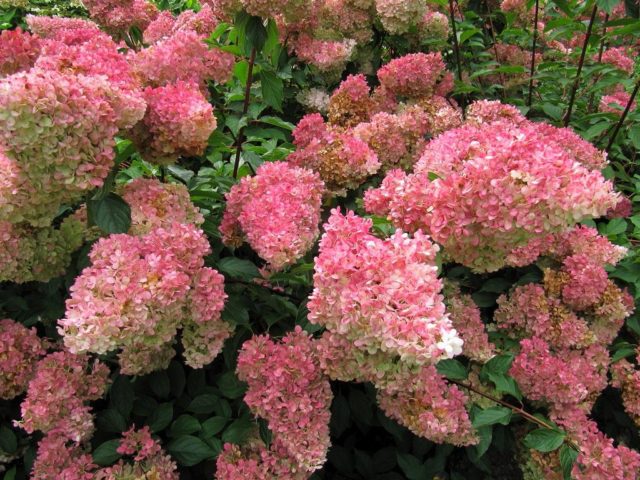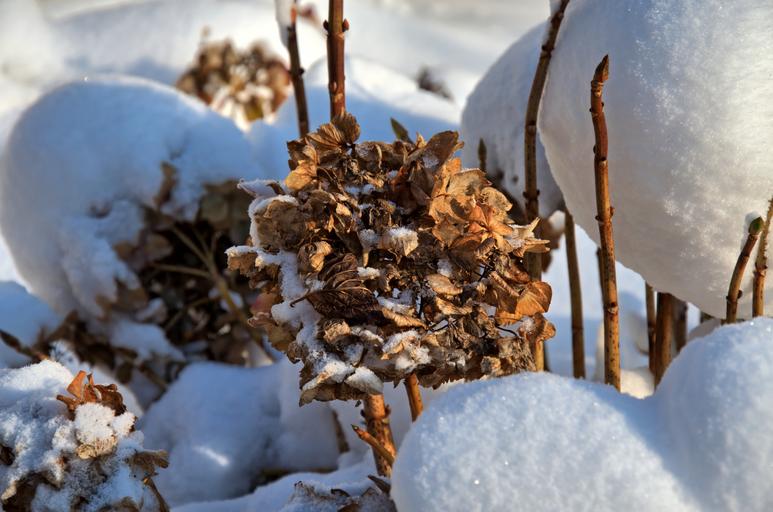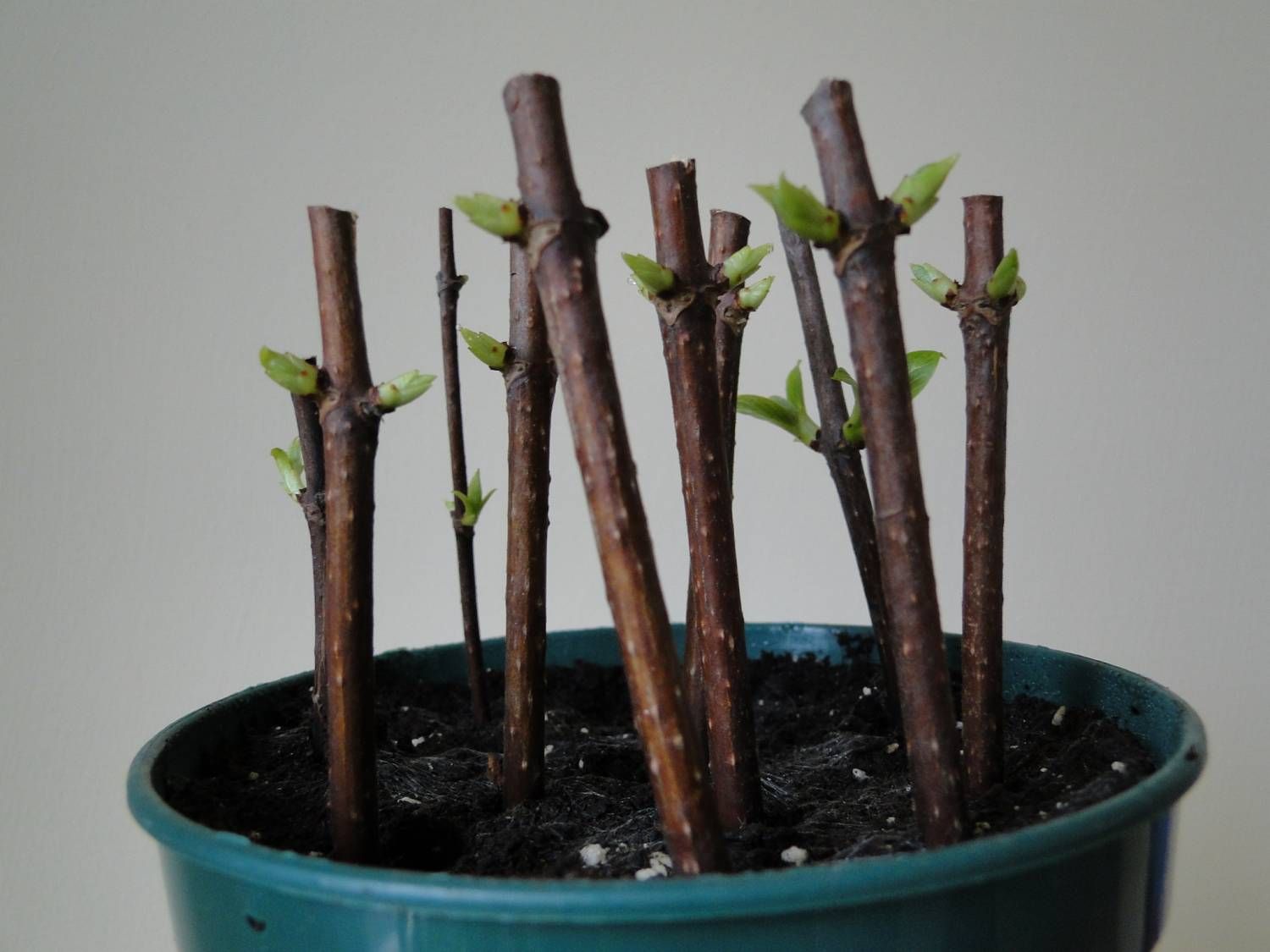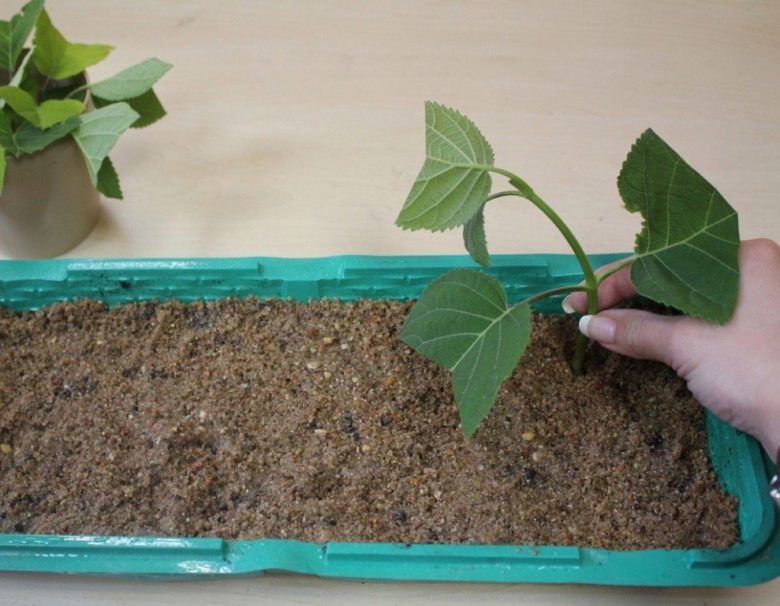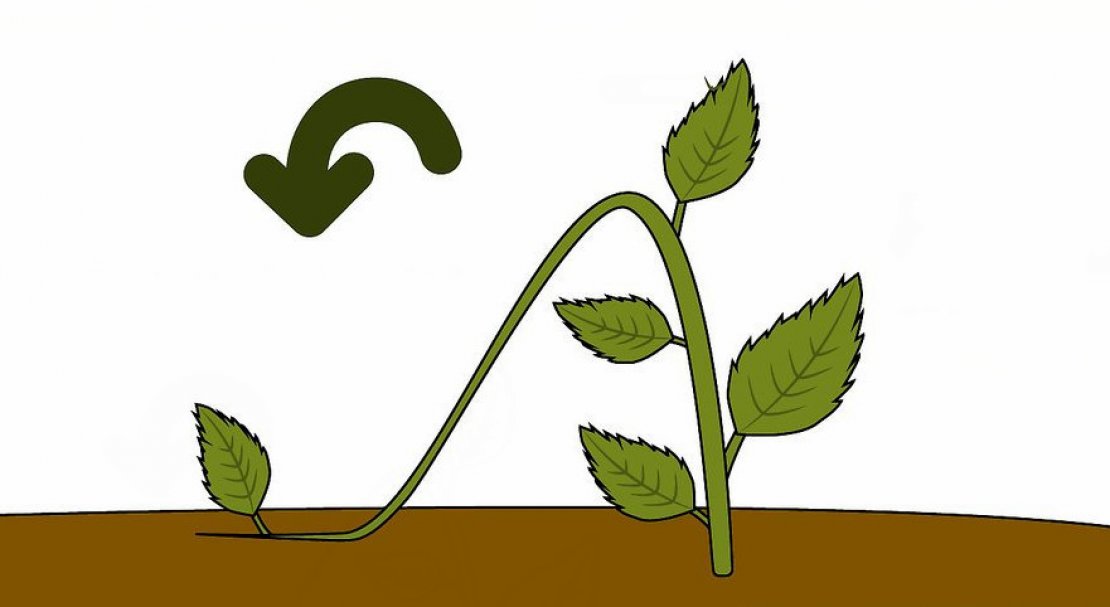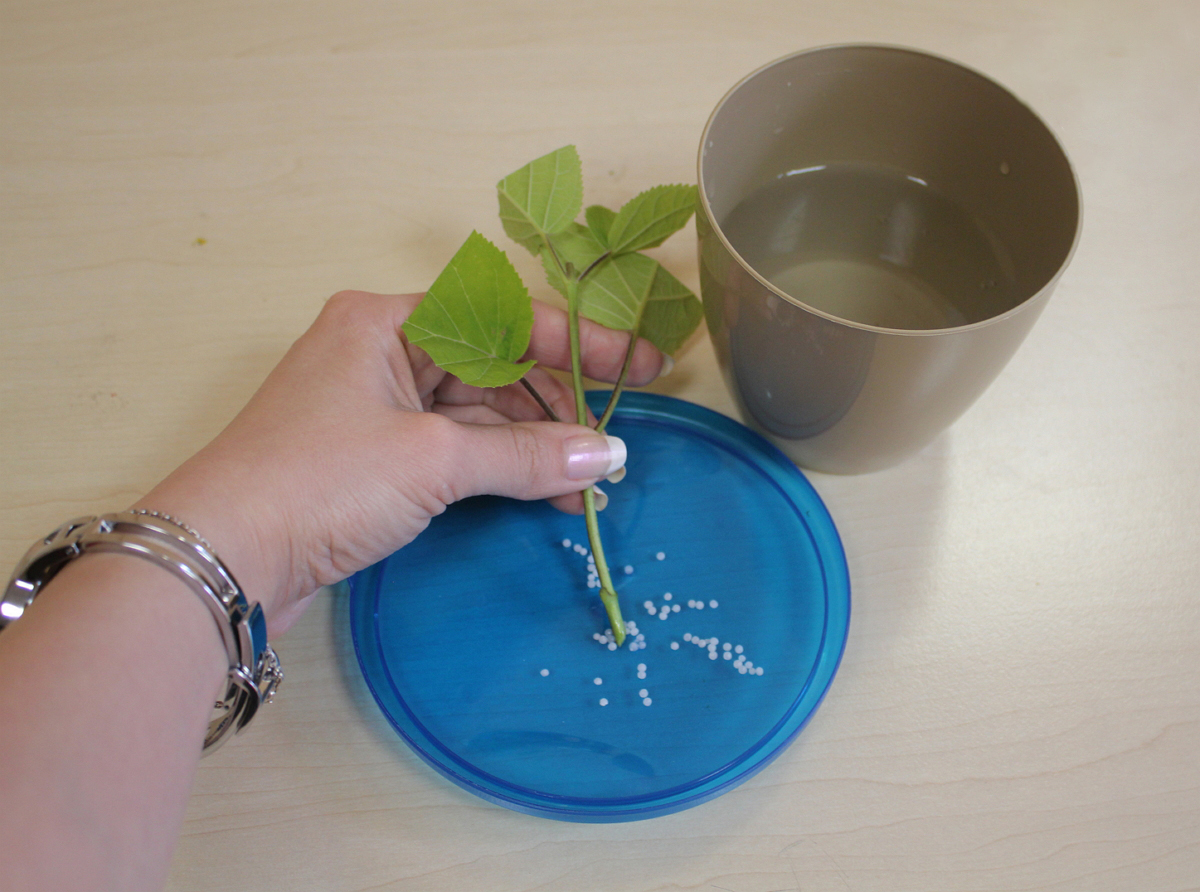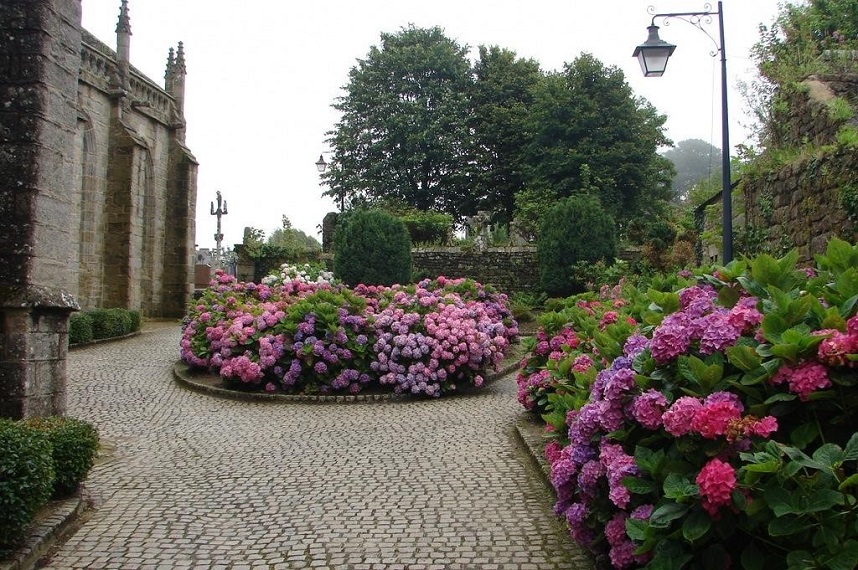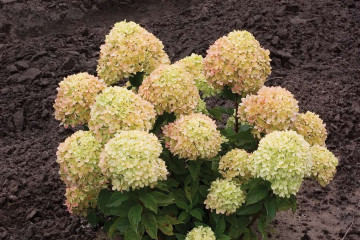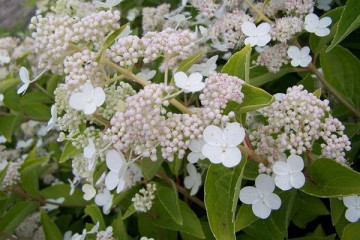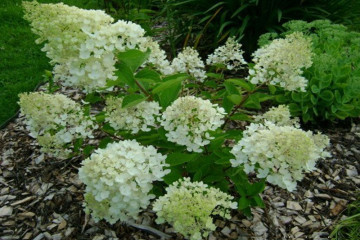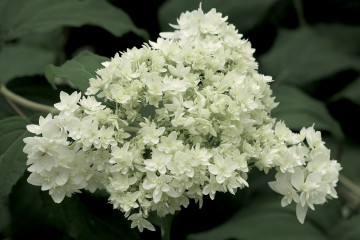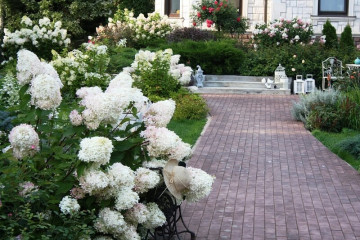Hydrangea Strawberry Blossom - description, planting and care
Content:
The variety is loved by summer residents and professional landscape designers for its abundant flowering. Hydrangea Strawberry Blossom is excellently grown in the regions of central Russia. Tolerates even severe frosts.
Description of the variety of hydrangea Strawberry Blossom and its characteristics
Hydrangea Strawberry Blossom belongs to the paniculate family of the genus Hortensiae. The height of the bush can reach 1.5 m. The species has thick stems and shoots. Flowers are collected in inflorescences that look like a cone. The diameter of the inflorescence, depending on the growing conditions, varies from 27 to 32 cm.
History of origin
The name panicle hydrangea Strawberry Blossom, according to one of the versions, comes from the Greek word Hydrangea and means "vessel of water". Plant varieties naturally grow in almost all states of America. It was brought to Europe at the beginning of the 19th century. At that time, there were already more than 500 varieties of hydrangea.
Features of the variety
Due to the tight fit of flowers to each other, the plant has a similarity to lilacs. Large oval hydrangea leaves. If favorable conditions are created, it is possible to achieve budding of the species in the first year of planting.
The flowering period can last from June to October. The color range of inflorescences depends on the season and the stage of ripening. In June, the flowers are colored green, later they begin to turn white, and by autumn they become pink. By October, they acquire a crimson hue with beige apical curls. The aroma will delight you until the very frost.
Winter hardiness
The high winter hardiness of the species has been experimentally proven. An adult plant is able to withstand even critical frosts - up to -30 ℃. If the winters in the growing region are too harsh, then you can save the hydrangea by simply covering it with burlap or spruce branches.
Planting and further care of Strawberry Blossom hydrangea
Compliance with the planting rules and timely preparatory work will allow you to grow the strongest plant.
Site selection and preparation
Paniculata hydrangea is suitable for normal development as a fertile and nutritious substrate with a normal acidity level. The landing pit should be prepared in advance. At a pH level of 6-7, hydrangea will form a large number of flowers. Landings are best placed in a sunny area.
Pre-sowing work is carried out 14-20 days before planting hydrangeas in the ground. The soil is plowed and weeds are carefully removed. The depth of the hole should be at least 40 cm, and the width should be 50 cm. Planting work is carried out either at the very end of spring or at the beginning of autumn.
How to plant
It is important to carefully examine the seedlings before planting. It is not recommended to plant damaged or diseased specimens. Before planting directly into the ground, the planting material is treated with any stimulating drug. Kornevin and Epin have proven themselves very well.
Step-by-step planting in open ground consists of the following activities:
- A large amount of water is poured into the pits. The approximate rate is 30 liters per bush. After all the liquid is absorbed, a mixture of preparations is introduced: 20 g of urea, 20 g of potassium sulfate, 40 g of sand and 40 g of humus.
- The seedlings are planted in place, the soil around is carefully tamped.
- Watering is carried out at the rate of 30 liters of water per 1 square meter of planting.
Watering and feeding
The description of the Strawberry Blossom hydrangea can be found in all flower guides. Thanks to its second name - a vessel for water, one can understand that the species is extremely demanding on high humidity. For humidification, settled water is used. The regularity of watering depends on the climatic conditions. In the central regions of Russia, 7-10 liters of water should be poured under one bush once a week.
As a fertilizer in spring, nitrogen fertilization is most suitable. During the growing season, preparations containing potassium and phosphate are added to the soil. In autumn, it is recommended to apply superphosphates and potash fertilizers to the soil.
Pruning
For proper development, hydrangea bushes must be cut off in time. The first formation is carried out at the moment when the plant is 4-5 years old. Not only damaged and frozen branches are subject to removal, but also shoots growing inside the bush. For normal growth, it is recommended to leave the 6-8 most developed branches. Each should have at least 5-6 buds. Performing proper pruning in the future will stimulate vigorous growth and lush flowering. For old hydrangeas, it is important to carry out anti-aging procedures on time. For this, 8-10 of the youngest shoots are left, and all the rest are cut off at the root. Abundant flowering can be achieved only after 2-3 seasons.
Preparing for winter
A healthy plant, with proper care, perfectly tolerates even the strongest cold snap. In late autumn, to protect an adult Strawberry hydrangea, it is recommended to carefully cover the ground around the plant with a thick layer of mulch. Before the onset of winter, a young bush is covered with any agrofibre or plant debris.
Reproduction
Hydrangea paniculata Strawberry Blossom reproduces in three ways: by parts of shoots, by dividing the root or by layering.
The most effective and simple way of propagation is cuttings. Using this method allows you to simultaneously get several seedlings at once. Reproduction by twigs is carried out in late spring or summer. For rooting, use the branches left after anti-aging pruning. Before planting on a personal plot, they need to be prepared.
To do this, lignified shoots are soaked in water at room temperature for 2-3 days. After that, the material is planted in peat soil diluted with sand. After rooting, the seedlings are planted in the garden plot.
Before planting, the lower leaves are removed from the cuttings, and the upper ones are halved. Sections of cuttings are subject to preliminary processing by Kornevin. They are planted in a peat substrate. In winter, cuttings are kept in conditions close to greenhouse ones. Rooted planting material is planted on the site only next spring.
When propagating by layering, it is necessary to bend the lower shoot of an adult bush to the ground and place it in a previously prepared recess. In this case, the top of the shoot should remain on the top of the soil.
By the end of summer, rooting will occur and young branches will appear. For the availability of oxygen, the planting is spud once every 7 days. The separation of the layering from the parent adult plant is carried out in the fall. In the future, a young seedling is transplanted to a new site.
If the flower has root suckers, then they do without digging up the parent species. In this case, the divisions are simply separated without damaging the roots of the main bush. The method is convenient in that this year budding and flowering of Strawberry hydrangea will occur.
Diseases and pests, means of combating them
Despite the excellent innate immunity, non-observance of the basic rules of care can lead to the following diseases:
- Chlorous damage to the green part of the hydrangea. The first external signs are partial yellowing of the leaf plates. For treatment, the acidity of the soil is increased with the help of peat and aluminum sulfate.
- If the flower is placed incorrectly, the hydrangea becomes covered with white and sometimes gray spots. Their appearance is a sign of sunburn. All damaged areas are subject to immediate destruction. The rest of the plant is urgently shaded.
- Almost all shrubs are attacked by powdery mildew. The disease develops at temperatures from +18 to +25 ℃. Sick plants are urgently sprayed with pesticides.
- Another serious disease is gray rot. Outwardly, it manifests itself in the form of a gray dense plaque. Unfortunately, with this disease, the plantings do not give in to any treatment and are destroyed.
- A cancerous disease of the species is tracheomycotic wilting. It fatally infects the stem of the plant. All plantings are removed from the site, and the place of growth is treated with a solution of potassium permanganate.
Most of the diseases can be avoided by prophylactic treatment of hydrangeas with fungicides. Weeds should be removed from the site and the ground around the flower should be covered with straw.
Use in landscape design
Most often, experts use this type as a low fence or the so-called "hedge". A gorgeous flowering plant that looks great near the road. Whole flower arrangements are created with the help of hydrangea.
Panicle hydrangea is not only a capricious species, but it will also decorate any area with its flowers. When choosing planting material, it should be remembered that the procedure determines the quality of the future plant.
